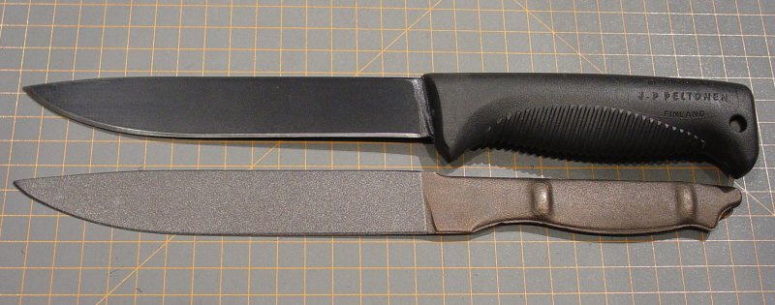After my long promotion of Finnish knives, just a few cents extra. It is true that it makes a world of difference whether you are car camping or long-range hiking/backpacking. When I was young (looong ago) I was a fanatic backpacker who made solo hikes of up to two weeks in the Scandinavian highlands, carrying full camping gear (with a tent) and food for the entire trip in my pack. I cut my toothbrush in half to save weight. Understandably, I did not carry heavy blades. A SAK and a larger folder (EKA Camp) or a Mora sufficed. Most of the hikes were well above the tree line so there were no trees to cut up anyway. (BTW, I'm not Scandinavian, I'm Dutch and now live in France, I just went on holiday hiking in Norway and Sweden in those days and I bought my first Mora knives, then 'Frost of Mora', in the town of Mora during such a trip.)
Always try to go for the lightest knife that will do what you need. A 4 to 6-inch belt knife can be 3 mm thick and will be strong enough for just about anything you would use it for. Go up to 4 mm for a 6-incher if you want to feel 200 percent sure, as long as it has a high grind so it will still cut. Delimb with it all day long, chop down saplings, split sticks into kindling, build shelters, hunt and in very rare cases, defend yourself.
Aaron in his long plea for the Gerber makes the valid remark that an enclosed-tang handle that prevents your hand from touching steel may allow you to cut live wire without electrocuting yourself, something that may be quite useful for a first responder. Full-width tangs are often skeletonized inside to reduce weight, which is not neccessarily stronger than a non-skeletonized tang of slightly reduced width that also runs all the way to the pommel. See the image of the Peltonen Ranger knife (original version) on Northern Bush:
Totally enclosed in rubber, so some may think 'not a full tang so not for me' but that is one impressive piece of steel. They do use that knife to pry chunks of mud and rocks from tank treads. And you could indeed cut through an live wire with it.
I don't care too much about the steel. It does not need to be a 'supersteel', just a good reliable steel that does what you need: hold a good working edge (who cares about shaving when surviving?) for a decent amount of time, be easy to sharpen in the field with fairly primitive means (I carry a piece of hardfoam 100/180 grit nail file in my pocket and/or my pack for quick and dirty touchups) and be tough enough not to break during pretty hard use. Apart from that, you may want stainless so you don't have to worry about rust. Personally I like tool steels such as 80CrV2 and SK5, which give me good service in the knives I have, and I don't mind cleaning and oiling them and seeing them getting a patina over time, but I must admit that I have no supersteel blades as they are beyond my financial means. Thus I am no 'steel junkie'. Good enough is OK. A knife is a tool after all.
Lastly, I would never carry a 'survival' mid-sized blade with a serrated spine. Better take a light saw and if you like carrying combos, attach that to your survival sheath along with your firesteel and whatever stuff you want to keep with your knife.

